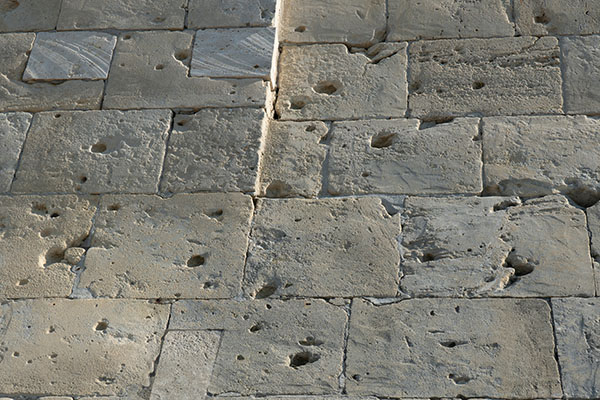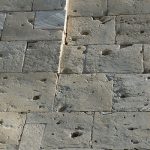
Prepper project: Bulletproofing greatly improves your home defense
Wednesday, June 28, 2023 by Olivia Cook
http://www.naturalnewstips.com/2023-06-28-prepper-project-bulletproofing-improves-your-home-defense.html

Thick furniture, drywall and most appliances are not going to do much when the intruders trying to invade your home are armed with high-caliber weapons. So, finding ways to fortify your home defense before SHTF is critical. (h/t SurvivalSullivan.com)
Bulletproofing your walls
You have quite a few options for bulletproofing walls. (Related: Simple strategies you can implement NOW to significantly improve your home security.)
Brick, cinderblock and poured concrete
Technically, brick, cinderblock and poured concrete are not truly bulletproof because they won’t necessarily withstand the impact of high-caliber weapons. But they do offer a good amount of bullet resistance, particularly against smaller rounds.
These materials are also quite affordable, which is why people often use them to externally reinforce the structure of their homes.
Sandbags
Often overlooked as a method of bulletproofing an area, sandbags are quite effective at stopping a bullet in their tracks because sand absorbs energy and ends up acting like a solid that most bullets can’t penetrate.
Some people have placed them in the space between walls for protection from gunfire, but this will be effective only against smaller rounds.
While sandbags are fairly affordable (especially when compared to other more high-tech options), they’re not necessarily the most practical thing in terms of bulletproofing all the walls in your home because they are quite bulky.
Having a cache of sandbags in your basement ready to go in an emergency can also be helpful for preventing flooding (among other things), so they’re a good multi-purpose thing to add to your stockpile of supplies.
Fiberglass
Bullet-resistant fiberglass panels are made from super-tough fibers, such as Kevlar, and are solid enough to reinforce your walls against a bullet. When a bullet hits these panels, they absorb the energy and stop it from passing through.
Ballistic fiberglass panels need to be mounted directly onto the studs on your walls, so installing them will involve removing your current drywall. Once the fiberglass is installed, it can be covered with either paneling or drywall and finished however you want, so the “look” of your home won’t be compromised.
The downside to fiberglass paneling is the cost. You can expect to pay between $13-$50 per square foot for ballistic fiberglass paneling. These panels will generally be shipped via freight in the form of pallets, so you’ll also want to factor in the cost of shipping when you make your budget.
Additionally, you’ll have to remove and then re-install your drywall to mount these panels, which is a labor-intensive, not to mention expensive, process. So, this method is best used when you’re already planning to renovate your home – and you have enough funds to cover all costs that will be involved.
Ballistic concrete
Ballistic concrete, also known as “BallistiCrete,” is a type of protective coating that can actually be sprayed onto your existing wall or walls – a solid option if you’re not interested in completely renovating your home and taking down your drywall to install ballistic paneling or steel.
BallistiCrete can be applied to nearly any surface, including drywall, masonry, cinderblock, stucco, cement and other building materials. The only thing BallistiCrete can’t be applied to is metal.
The thicker the coating, the more protection you get from bullets. It can protect you from all handgun bullets and most rifle rounds, even those that are designed to pierce through body armor.
Additionally, BallistiCrete doesn’t affect how you can design or decorate your home. You can also drill right into BallistiCrete if you want to hang up artwork or photos, so it has minimal, if any effect, on the actual layout of your home. BallistiCrete is also fire-proof, so it doesn’t produce smoke if there’s a fire.
Like fiberglass panels, BallistiCrete is expensive. It starts at about $12 per square foot, but the final cost will vary based on the thickness of the concrete and any associated labor. If you want ballistic protection that doesn’t involve major renovations to your home, this is a solid option.
Steel
Ballistic steel armor plates are highly effective at bulletproofing your walls, but are not as popular as fiberglass panels or ballistic concrete because they are very expensive, heavy and difficult to install. They also can’t be trimmed on-site and need to be sent back to a shop for any alterations.
If you’re installing steel thick enough to stop a bullet in your walls, you’ll probably need to reinforce them so they’re strong enough to support this extra weight. Simply hanging them with screws is not an option with the thicker panels.
Bulletproofing your windows and doors
Here are some options to reinforce your home’s access points:
Bulletproof windows
There are a lot of companies that make ballistic glass, and most will offer custom-designed windows to protect your home. You can generally choose from different glass thicknesses, depending on how much protection you’re looking for and how much you can afford.
The glass’ UL 752 level certification will tell you precisely what caliber round they’re designed to stop. Anything with a UL 752 Level 1-3 will stop a handgun bullet, while UL 752 Level 4 glass will stop a 30-06 round.
Bulletproof windows can be quite costly. These windows are usually made-to-order, so getting a ballpark price estimate for your home is tricky without requesting a quote from a manufacturer.
At an absolute minimum, you can expect to pay at least $45 per square foot – but the actual cost, including framing and labor, is likely to be a bit higher.
Bulletproof doors
Most residential doors are a fairly standard size, so getting a quote is fairly simple and some companies will have ballistic doors in stock at their factory. Like windows, bulletproof doors will also have a UL 752 level rating that will tell you how much protection they offer.
When you install a bulletproof door, you’ll also have to install new framing. A ballistic door will do nothing for you if someone can just kick it open. So, most companies will install a new steel frame to help reinforce the door and create a more secure barrier between you and an armed intruder.
Ballistic doors aren’t cheap. The most affordable options will run you at least $3,000 and can increase quickly in price from there. So, swapping out all of your house’s doors for bulletproof options isn’t possible for most people.
If you’re limited financially, but still want to reinforce your home with bulletproof doors, consider replacing just your front and backdoor. This will help stop an intruder from getting into your home in the first place and will allow you to shelter your family elsewhere until the threat is gone.
Bulletproofing a safe room
Without wiping out your bank account, you can turn one room in your home into your safe haven instead of trying to bulletproof your entire house. Ideally, your “safe room” can fit your entire family. A spare bedroom is ideal, but a space that’s window-free is even better.
Once you identify a good place for your safe room, you can focus on making it bulletproof. Installing fiberglass paneling or using BallistiCrete is the easiest way to reinforce these walls without making the space seem conspicuous. Then, you can replace the door with a bulletproof model to keep intruders out.
Visit SelfDefense.news to learn more tips about fortifying your home defense.
Watch this video to learn about a simple and low-budget trick to help bulletproof your home.
This video is from the Daily Videos channel on Brighteon.com.
More related stories:
More and more Americans are bulletproofing their cars as crime and lawlessness worsen.
Home security: 3 Ways to protect your homestead.
Looking to improve your home security? Here are 25 things you can do right now.
Sources include:
Tagged Under: Tags: ballistic concrete, ballistic door, ballistic plates, brick, bulletproofing, cinderblock, fiberglass, Home Defense, home fortification, home security, homesteading, how-to, off grid, preparedness, prepper, prepping, prevention, sandbags, self-defense, survival, tips
RECENT ARTICLES


Basic survival and prepping skills that your kids should learn ASAP
By Olivia Cook

Try these simple tests to check for adulteration of food, beverages, and spices

Prepper project: Bulletproofing greatly improves your home defense
By Olivia Cook

Signs of abnormal mental development and common disorders in children
By Zoey Sky
COPYRIGHT © 2017 NATURAL NEWS TIPS


